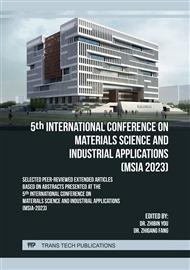p.1
p.9
p.15
p.29
p.43
p.57
p.79
p.91
p.103
Modification and Application of Materials for Strong Inhibitory Drilling Fluid
Abstract:
Due to the strong inhibition of drilling fluid, many polymer fluid loss additives can not play their role. Therefore, it is necessary to develop some water loss reducing materials that can withstand the strong inhibition environment. In this paper, the surface of asbestos fiber was modified and treated by indoor experiments. The physical and chemical properties of the obtained drilling fluid treatment samples were evaluated to optimize the appropriate amount of reagents used for surface treatment of asbestos. Subsequently, the drilling fluid performance of the obtained treatment agent samples were evaluated at different temperatures to analyze the effect of temperature on the drilling fluid performance. The surface of asbestos fiber was modified by adsorbed cationic surfactant CTAC which better solved the problem of entanglement of asbestos fiber in drilling fluid. The mechanism of the action of the surface of asbestos fiber was analyzed by scanning electron microscope observation experiments. Subsequently, different amounts of modified asbestos fiber was added to the drilling fluid and the performance of drilling fluid was evaluated at different temperatures. The experimental results showed that the modified asbestos fiber reduced the filtration loss of drilling fluid and still maintained good filtration loss reduction effect at 200°C.
Info:
Periodical:
Pages:
9-14
Citation:
Online since:
May 2023
Keywords:
Price:
Сopyright:
© 2023 Trans Tech Publications Ltd. All Rights Reserved
Share:
Citation:



